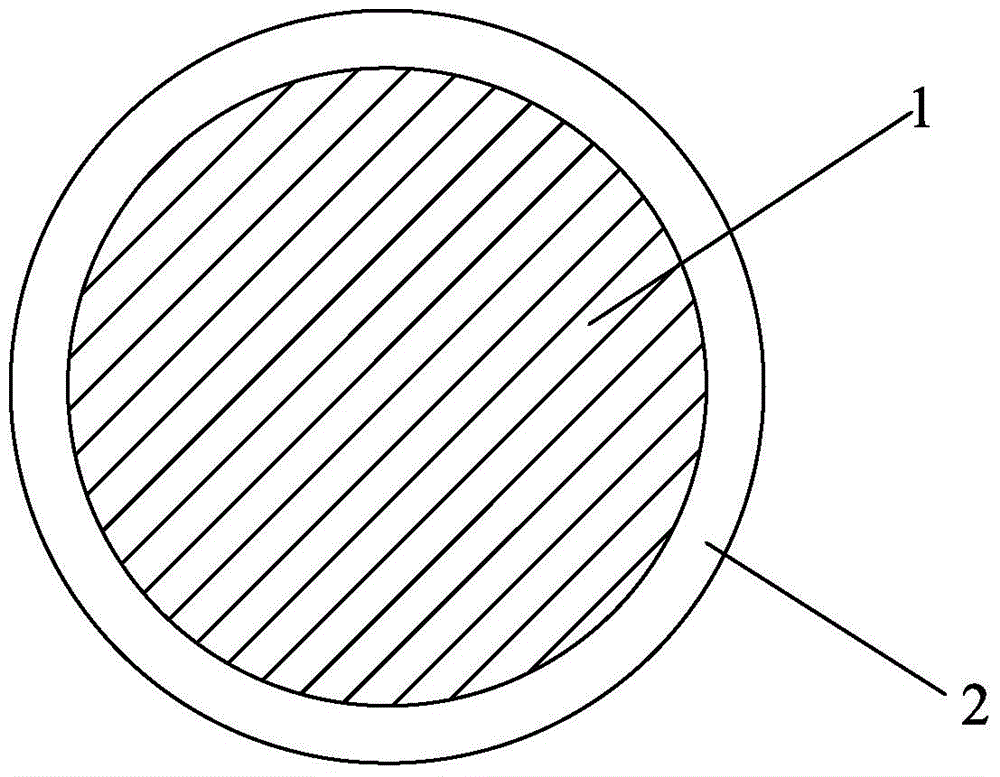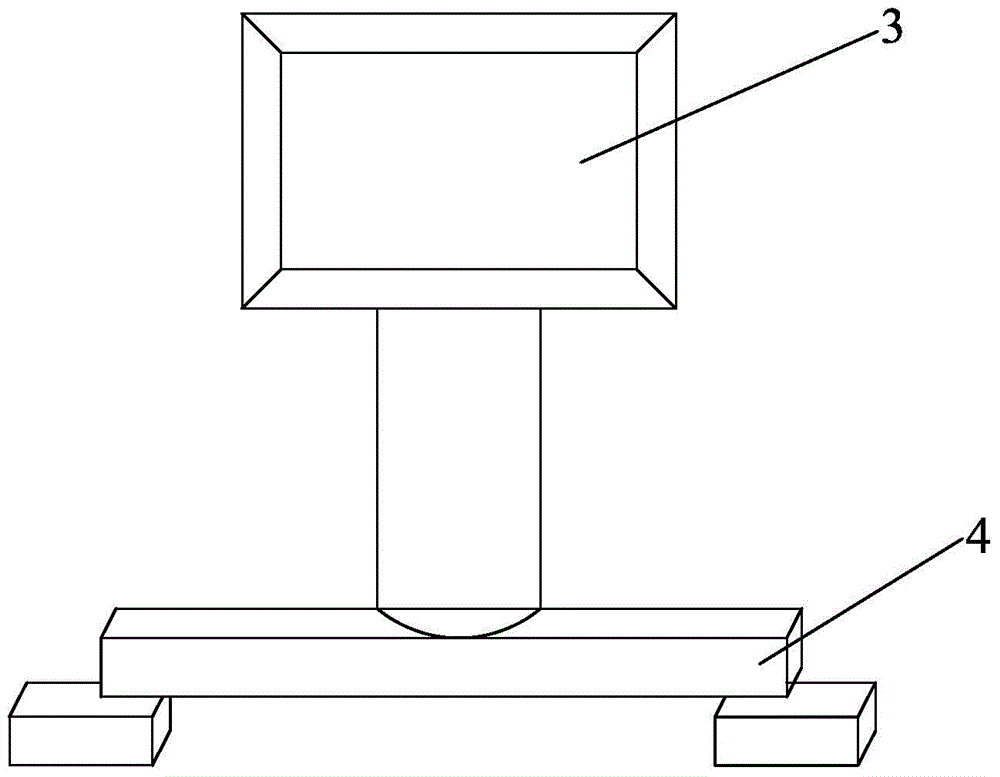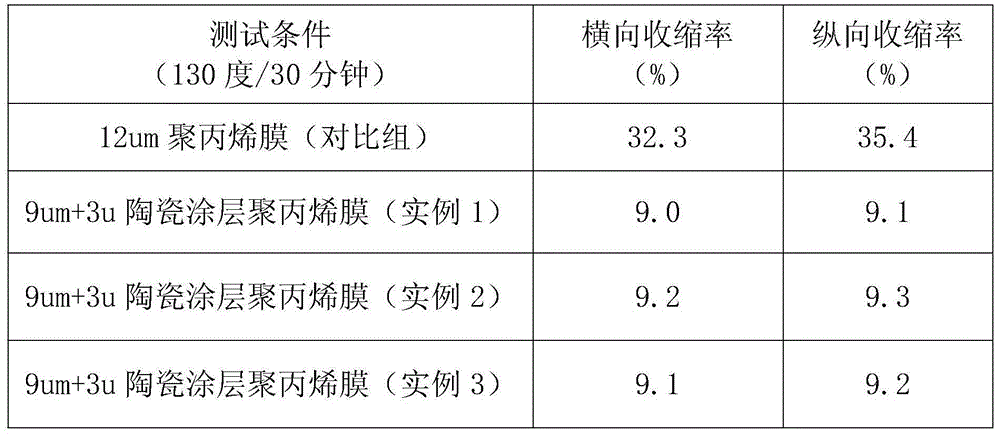Manufacturing method of lithium ion battery diaphragm as well as battery diaphragm prepared by manufacturing method and battery
A lithium ion battery and a manufacturing method technology are applied in the field of battery separators and batteries, which can solve the problems of poor quality, deterioration of battery performance, and high cost, and achieve the effects of reducing coating processes, avoiding poor quality, and increasing membrane breaking temperature.
- Summary
- Abstract
- Description
- Claims
- Application Information
AI Technical Summary
Problems solved by technology
Method used
Image
Examples
Embodiment 1
[0030] A method for manufacturing a lithium ion battery separator, the process steps comprising:
[0031] a. Add 5% LBG-1 (a kind of polyvinylidene fluoride PVDF) into acetone, turn on the mixer and stir to dissolve into a uniform and transparent organic polymer material solution.
[0032] b. Add ceramic powder whose solid content accounts for 30% of the solution to the above solution, and the 50% cumulative diameter D50 in the particle size distribution of the ceramic powder is 0.5 microns, and stir evenly.
[0033] c. Evaporate and dry the solvent in the mixture by heating the above mixture, so that the surface of the ceramic particles 1 is coated with a layer of polyvinylidene fluoride resin PVDF 2 (see appendix). figure 1 ), the thickness of the coating layer 2 is about 0.1 micron, and the ceramic particle powder coated with the organic polymer material layer is obtained.
[0034] d. Add the coated ceramic powder into SBR (styrene butadiene rubber) emulsion, CMC (carboxym...
Embodiment 2
[0038] A method for manufacturing a lithium ion battery separator, the process steps comprising:
[0039] a. Add 10% LBG-1 (a kind of polyvinylidene fluoride PVDF) into acetone, turn on the mixer and stir to dissolve into a uniform and transparent solution.
[0040] b. Add ceramic powder whose solid content accounts for 30% of the solution to the above solution, and the 50% cumulative diameter D50 in the particle size distribution of the ceramic powder is 0.5um, and stir evenly.
[0041] c. Spray-dry the above mixture to remove the solvent in the mixture, so that the surface of the ceramic particles is coated with a layer of PVDF (see appendix). figure 1 ), the coating thickness is about 0.2 μm.
[0042] d. Add the coated ceramic powder into SBR (styrene butadiene rubber) emulsion, CMC (carboxymethyl cellulose) and deionized water and stir evenly.
[0043] e. Coat the above prepared slurry on a polypropylene membrane of a membrane substrate with a thickness of 9 microns by g...
Embodiment 3
[0046] A method for manufacturing a lithium ion battery separator, the process steps comprising:
[0047] a. Add ceramic powder and LBG-1 (a kind of polyvinylidene fluoride PVDF) into the mechanical fusion equipment at a ratio of 75:25 and mix evenly;
[0048] b. The mixture in step a is heated to 160 degrees, stirred for 2 hours and then cooled, so that LBG-1 forms a coating layer with a thickness of about 0.1 microns on the surface of the ceramic particles;
[0049] c. Add the coated ceramic powder into SBR (styrene-butadiene rubber) emulsion, and stir evenly with CMC (carboxymethyl cellulose) and deionized water.
[0050] d. Coat the above prepared slurry on a 9-micron polypropylene separator by gravure printing and dry, and the coating thickness is 3 microns after coating and drying.
[0051] Thereby, a lithium ion battery separator of the present embodiment can be obtained, the total thickness of the lithium ion battery separator is 12 microns, wherein the polypropylene ...
PUM
| Property | Measurement | Unit |
|---|---|---|
| thickness | aaaaa | aaaaa |
| thickness | aaaaa | aaaaa |
| thickness | aaaaa | aaaaa |
Abstract
Description
Claims
Application Information
 Login to View More
Login to View More - R&D
- Intellectual Property
- Life Sciences
- Materials
- Tech Scout
- Unparalleled Data Quality
- Higher Quality Content
- 60% Fewer Hallucinations
Browse by: Latest US Patents, China's latest patents, Technical Efficacy Thesaurus, Application Domain, Technology Topic, Popular Technical Reports.
© 2025 PatSnap. All rights reserved.Legal|Privacy policy|Modern Slavery Act Transparency Statement|Sitemap|About US| Contact US: help@patsnap.com



